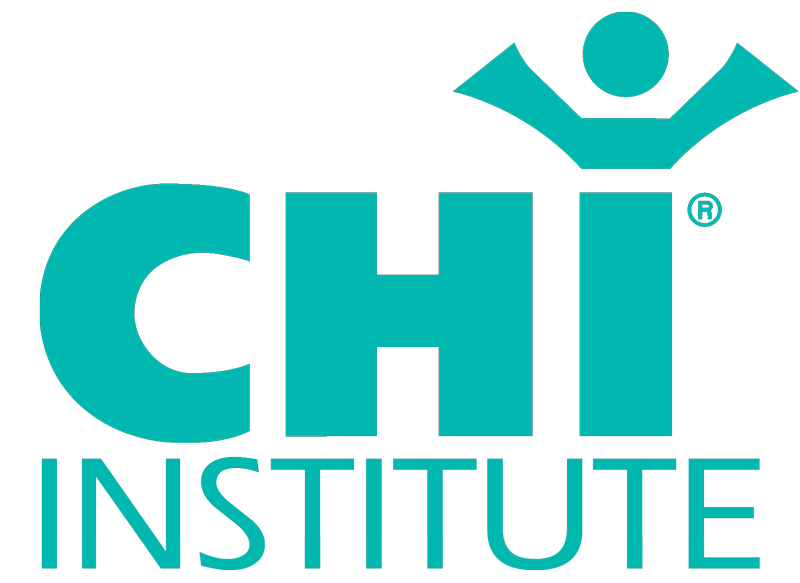
Bronchial Asthma Treated by Subaudible, Outgoing Qi
The child bronchial asthma, a common asthmatic disease with higher incidence in recent years in pediatrics can influence the child’s development. Based on the feature of child bronchial asthma and zang and fu, channels and collaterals, and Qi and blood of traditional Chinese medicine, an infra-audible instrument is used for cure of paroxysmal child bronchial asthma of 50 cases, and draw a comparison before/after treatment on test of reproduction rate of T’ lymphocyte subpot)ulation (CD2 , CD4, CD8, and CD4/CD8) of peripheral blood to observe the clinical effect of subaudible outgoing Qi treatment on raising immunity of organism.
- Cases and grouping: Cases are selected from the First Affiliated Hospital based on the diagnostic criteria of child asthma and infantile asthmatic bronchitics of Chengdu Conference in 1987[1]. Treatment group in 50 cases(routine drugs and subaudible outgoing Qi), in it, 27 males and 23 females, with an age of 1 to 14; control group in 15 cases(routine drugs) in it, 4 males and 11 females, with an age of 1 to 12. They are all in paroxysmal and are treated with a test of T lymphocyte subpopulation of peripheral blood without taking hormone.
- Data of infra-audible instrument: This instrument (Infratonic) is offered by the China Healthways Institute, U.S.A. with main peak frequency of 8-14HZ, intensity of sound of 70-90 dB in 3 grades adjustable [2].
- Method: Based on the features of child bronchial asthma and a dialectical therapeutics of traditional Chinese medicine, 4 points, Dingchuan(located on the back, 0.5 cun lateral to the lower border of the spinous process of the 7th cervical vertebra). Indications: Facilitating the flow of the lung–Qi to relieve asthma Feishu(Located on 1.5 cun lateral to the lower border of the spinous process of the 3rd thoracic vertebra). Indications: Facilitating the flow of the lung-Qi to resolve cough; Tiantu (located on the neck, on the anterior midline, in the center of the suprasternal fossa, indications: Cough, asthma, chest pain and so on) and Danzhong (located on the chest, on the anterior midline, on the level of the 4th intercostal space, on the midpoint of the line connecting the two nipples, indications: Checking upward adverse flow of the lung or the stomach-Qi) are treated for 5-10 min. respectively per AM, in a course of treatment of 5 days.
- Observation item: Antihuman T lymphocyte subpopulation monoclonal antibody APAAP bridge ligase labelled method (it is manufactured by the Biological Development Center of Military Medical Science Institute of China). Based on the use labelled on the kit, respectively determine the change of T lymphocyte subpopulation in two groups before/after treatment, and record patients’ symptoms and signs.
- Judgement criterion of therapeutical effect: Based on the Amendment of Criterion of Tberapeutical Effect [3], there are four grades: (1) Clinical controlled: An entire remission for asthma symptom. Even if occasionally a mild attack is occurred, it can be remitted without taking any medicine. (2) Obviously curative effect: Asthma attack is more obviously relieved than before treatment within a short time. (3) Improvement: Some abatement. (4) Inefficacy: Symptoms, signs and reproduction rate of T lymphocyte subpopulation are in unimproved or exacerbated.
- Results of evaluating the theteapeutic effect: In treatment group has a total effective rate of 94%, in it, clinical controlled of 27 cases, obviously curative effect of 12 cases, improvement of 9 cases, inefficacy of 6 cases; In control group,a total effective rate of 80%, In it clinical controlled of 6 cases, obviously curative effect of 3 cases, improvement of 3 cases, inefficacy of 3 cases. X2 determination proved that there is a more obvious therapeutic effect in the treatment group than that in the control group (P<0.01).
- Some testing indexes of T lymphocyte subpopulation proved that there was not any difference of CD2 of peripheral blood in control group (P>0.05) before/after treatment CD4 /CD8 has an obvious difference (P<0.05). CD4/CD8 has a great difference (P<0.05). As for the treatment group, before/after treatment, (CD2, CD4, CD8, CD4/CD8 of peripheral blood have an obvious difference (P<0.01). Determinations proved that after treatment in control group and treatment group) CD4 and CD8 had a great increase (P<0.05); But after treatment in treatment group, CD2, CD4, CD8, CD4/CD8 are very obviously greater than in control group (P<0.05), there is a great difference (P<0.01), before/aftet treatment between the two groups. See table.
T Lymphocyte Subpopulation in Two Groups (%X ±SD) Before/After Treatment
Group Cases CD2 CD4 CD8 CD4/CD8 Before 57.06 ± 5, 08 32. 00 ± 6. 47 26, 66 ± 4.89 0. 58 ± 0.26 Treat- 50 treatment ment After 67.58 ± 4. 73 42. 88 ± 3. 54 37. 44 ± 5.01 1.41 ± 0.26 group treatment
Before 66.07 ± 9.11 31.93 ± 7. 01 24.80 ± 5.48 0.93 ± 0.26 Control 15 treatment group After 59.27 ± 7.30* 35.80± 6.94 29.07 ± 5.22 1.21± 0.41** treatment
Comparison before/after treatment P>0.01 unless noted:* P>0.05, ** P<0.05 Discussion: In recent years, there has been much study on the, pathogenesis of child bronchial asthma, in which many reports are about cellular immunity of asthma in particular the relationship between asthma and T lymphocyte subpopulation [4,5}. At present, most research workers consider that child bronchial asthma is in close relationship with viral respiratory tract infection, also an IgE rising would cause a 1-type allergic reaction. The synthesis of IgE depends on the coordination of T an B lymphocytes. But T helper lymphocytes and supressor T lymphocytes may have a violent effect on IgE reaction [6}. T cells function in cellular immunity, with some important actions, such as antiviral, antitumor and control immune system. But the function that controls immune system is carried out with T lymphocyte subpopulation. Under normal circumstances, there is an antagonistic balance among T lymphocyte subpopulations. Under abnormal circumstances a change from any of side would cause a disorder of immune mechanism so as to cause clinical symptom, such as laryngeal itching, tussiculation of infection of the upper respiratory tract, with tiredness, chilly, headache and low fever, etc, sometimes wheeze, often no special signs, a change of T lymphocyte subpopulation can be determined. In traditional Chinese medicine, it is named asthma [7].
It is reported that [2], infrasound, a wave with 20 Hz max. without hearing by human. Many human organs have resonance frequency in the range of infrasound. The infra-audible instrument, combines modern electronics with traditional (Chinese niedicine,serves the function of a result similar to that of the outgoing Qi [8]. ln traditional Chinese medicine view, it has the following indications: dredging the channels, regulating the function among the zang and fu, promoting vital energy and blood circulation, improving immunologic function. A satisfactory result has been achieved in cure of child bronchial asthma by the infra-audible instrument. In this study, clinical symptoms of pediatric patients of 94% have been improved in which the improvement of wheeze, cough and asthma caused by infection of the upper repiratory tract are more obvious. Testing of peripheral blood showed that the reproduction rate of T lymphocytes subpopulation in treatment group is greater than those receiving routine treatment. This increased reproduction rate indicates increased level of immunologic function of human cells. It is thus obvious that the subaudlble outgoing Qi treatment has 6 certain material grounds. It serves the function of reducing course of treatment without side-effect, it is painless, with no adverse reaction and is comfortable. As for its mechanism of action medical biology should be explored in the future.
- Hua Yunhan and Chen Yuzhi. Diagnosis and Classified Criteria of Bronchial Asthma. (CHINESE JOURNAL OF PEDIATRICS. 1988, 26( 1): 41
- Niu Xin and Liu Guo;long. Brain wave analysys of qigong outgoing Qi effect. ACTA Medica Sinica. 1989, 4(1): 11
- Definition, diagnosis, classified of state of illness and criterion of therapeutical effect in bronchial asthma. CHINESE JOURNAL OF TUBERCULOSIS AND RESPIRATORY DISEASES. 1993, 16, Asthma supplement: 5
- Chief editor Sun Huiqin. CHILD BRONCHIAL ASTHMA. People’s Health Publishing House, Beijing. 1990:20-56
- Shi Xiaodong.Child asthma and testing of T lymphocyte subpopulation of asthmatic bronchitics, THE JOURNAL OF CLINICAL PEDIATRICS. 1991, 9(1):1.
- Nong Guangmin and Xie Xiangzhi. Child asthma and testing of T lymphocyte subpopulation of asthmatic bronchitics. ACTA OF GUANGXI MEDICAL COLLEGE 1993, 10(2):174.
- Chief editor He Shaoqi, MODERN TRADITIONAL CHINESE MEDICINE INTERNAL MEDICINE. China Medicine Science Publishing House, Beijing. 1991:197-208.
- Yi Jinghong, Zhao Mincai, and Li Daochong, et al. Qigong outgoing Qi effect on reproduction rate of human T lymphocyte subpopulation. ACTA MEDICA SINICA. 1998, 3(6):11.


Comments (0)